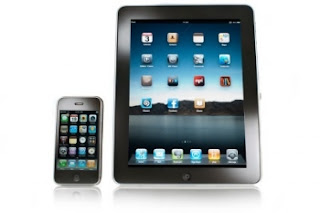
One of the biggest misconceptions about the Apple iPad is that it is essentially a larger iPhone or iPod Touch (I’ve also heard the term “iPhone on steroids” thrown around). This is simply not true: The iPad and iPhone are completely different beasts when it comes to hardware, software, and what you can do on each device. That said, the two devices do can perform a lot of the same functions: Both allow you to play games, browse the Web, send e-mail, watch videos, and listen to music.
So if you’re already an iPhone owner, do you need the iPad too? The answer depends on how you currently use your iPhone--and on what you want out of the iPad. Think of it this way: If you’ve ever found yourself wanting more from your iPhone, you might consider investing in an iPad. Do you watch a lot of videos on your iPhone? If so, you’ve probably wished that the display were larger. Are you a gamer? iPad games blow iPhone games out of the water.
My conclusion: I’m an iPhone 3GS owner. And at the moment, I’m not rushing to the store to buy an iPad--though I'm open to changing my mind. But don’t let my indecisiveness sway you. Consider these factors.
Price: Deep Pockets Required
For obvious reasons, the iPad is a much bigger investment than the iPhone 3GS. Pricing depends on the amount of storage the iPad includes, and on whether it has support for 3G networks. An iPad equipped only with Wi-Fi connectivity costs $500 (16GB), $600 (32GB), or $700 (64GB). The Wi-Fi-plus-3G version, available later this month, will cost $130 more at each size--$630 (16GB), $730 (32GB), and $830 (64GB). Of course, if you get the 3G version, you’ll also have to pay for a data plan--either $15 a month for 250MB of data, or $30 a month for unlimited data.
By comparison, the iPhone 3G is $100 while the newer and faster iPhone 3GS starts at $200 (with a two-year contract). Unlimited 3G data plans for the iPhone cost $30 as well on top of your voice and text rates. Call me cheap, but the thought of paying for two separate data plans makes me shudder.
Be prepared to shell out a lot of money for content, too: My PCWorld colleagues who picked up iPads today have already put significant dents in their wallets by purchasing apps, which range in price from free to $20--a bit more expensive than the equivalent iPhone apps, typically. And if you plan on scooping up books through Apple’s iBooks Store, expect to pay around $12 to $15 (though there are a few cheaper titles, as well as free iBooks). As an avid reader and a fan of ridiculous iPhone games, I don’t think I’d be able to support my habit on the iPad.
Hefty Hardware
Another thing to consider is how you’re going to tote the 9.6-by-7.5-by-0.5-inch-thick iPad around. Unless you invest in a pair of iPants, you can’t exactly toss it in your pocket. And I’m not a fan of hauling a lot of stuff around on my person, so the iPhone is a better match for me. Though 1.5 pounds doesn’t seem like much weight, I think carrying the iPad around all day might take a toll on my shoulders. Also a protective case is a must: Do not throw this thing unprotected into your backpack among your other junk. The display can crack and the back scratches easily. Don’t believe me? Check out our iPad Stress Test video. I’m constantly dropping my iPhone, so I’m afraid of how I’d handle the iPad.
On the upside, the iPad’s multimedia features trump the iPhone’s. Obviously, watching videos is superior on the iPad’s 9.7-inch display. And have you ever tried listening to music via your iPhone’s external speakers? Music sounds weak and slightly tinny--definitely not ideal for an audiophile like me. I was pleasantly surprised by the iPad’s speakers, however. My music sounded loud and the quality was pretty clean.
Also, while I’m satisfied with Web browsing on the iPhone, it's a pleasure to be able to comfortably view a full page on the iPad.
Native Applications: Better on the iPad
The iPhone and the iPad have many of the same core native apps (the iPhone runs iPhone OS 3.1, while the iPad runs iPhone OS 3.2), but a few of the iPad’s have been optimized to take advantage of the bigger screen. The e-mail application, for example, in landscape mode shows recent messages and a search bar at the left, and displays the selected message at the right--a useful layout that simply isn’t possible on the iPhone's smaller screen. The Photo Viewer is equally cool: The app lets you preview many more images, more easily than on the iPhone. There are also more ways of viewing your images on the iPad, including some cool slideshow options. I also love the way the contacts application resembles a physical address book.
Cooler Apps
No question, apps optimized for the iPad look incredible. Hardcore gamers in particular will be impressed. But as more of a casual gamer, I’m okay with playing my (much smaller) games on my iPhone. The same goes for other applications. I tweet a couple of times a day and am fine with Tweetdeck on my iPhone. But frequent Twitter users might get a lot more out of Tweetdeck on the iPad: You can tweet from multiple accounts, easily geolocate tweets via a built-in map, and view many more of your friends’ updates at once.
Though I appreciate all that the iPad can do, I’m pretty satisfied with my iPhone 3GS and I won’t be rushing over to the Apple Store any time soon. I’ve only spent a day with the iPad, though, so my opinion might change--especially as more cool apps roll out.
